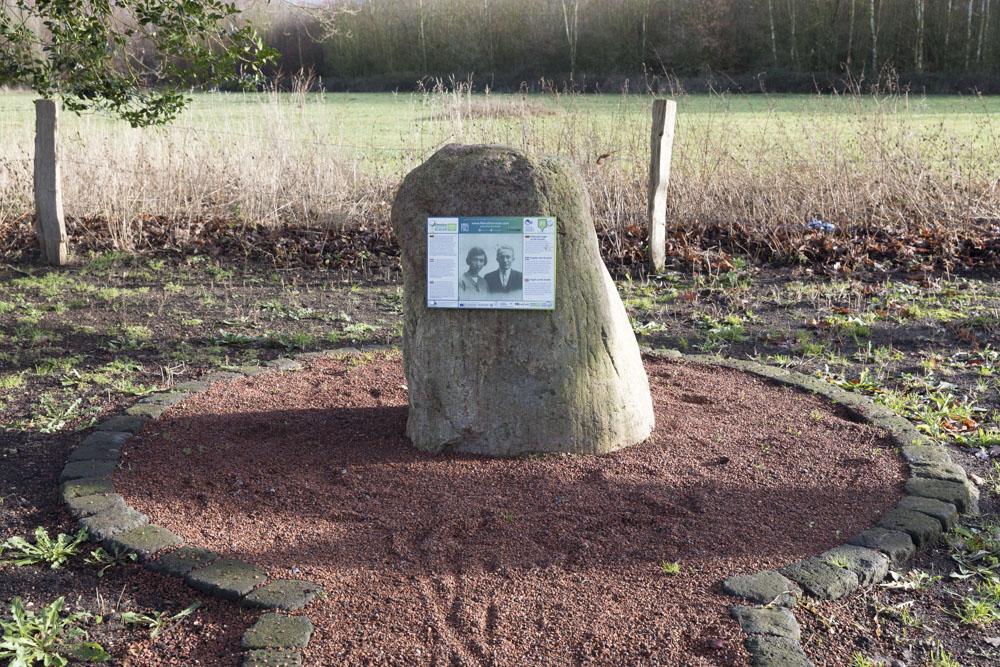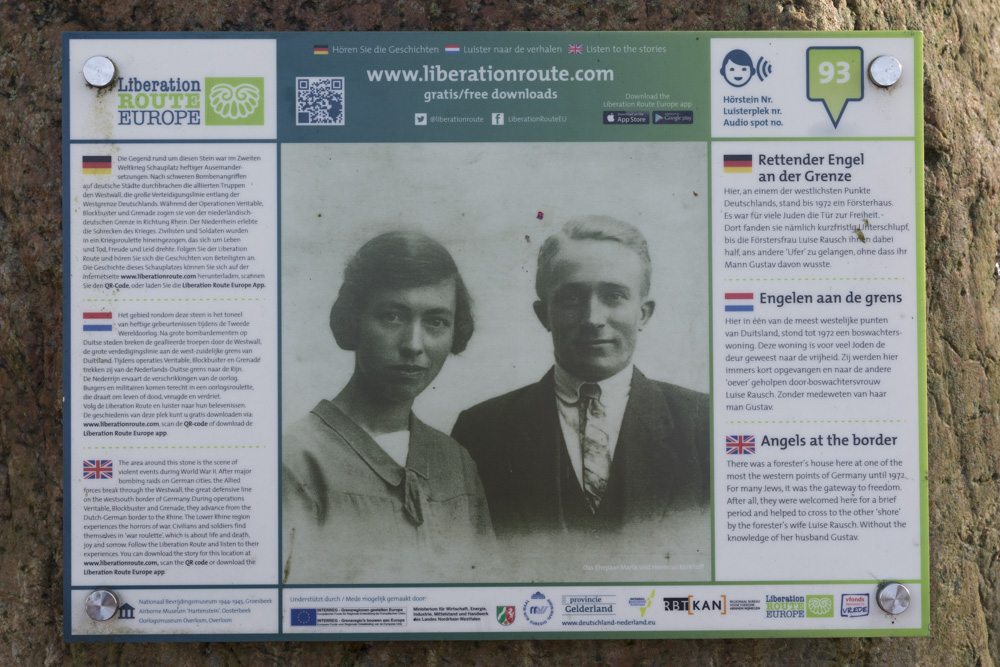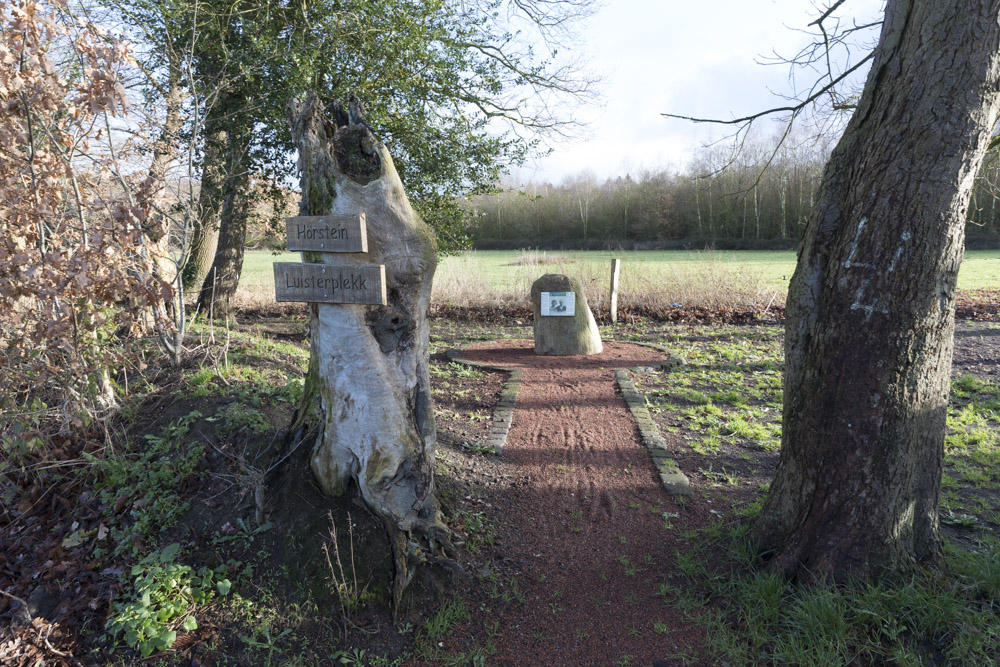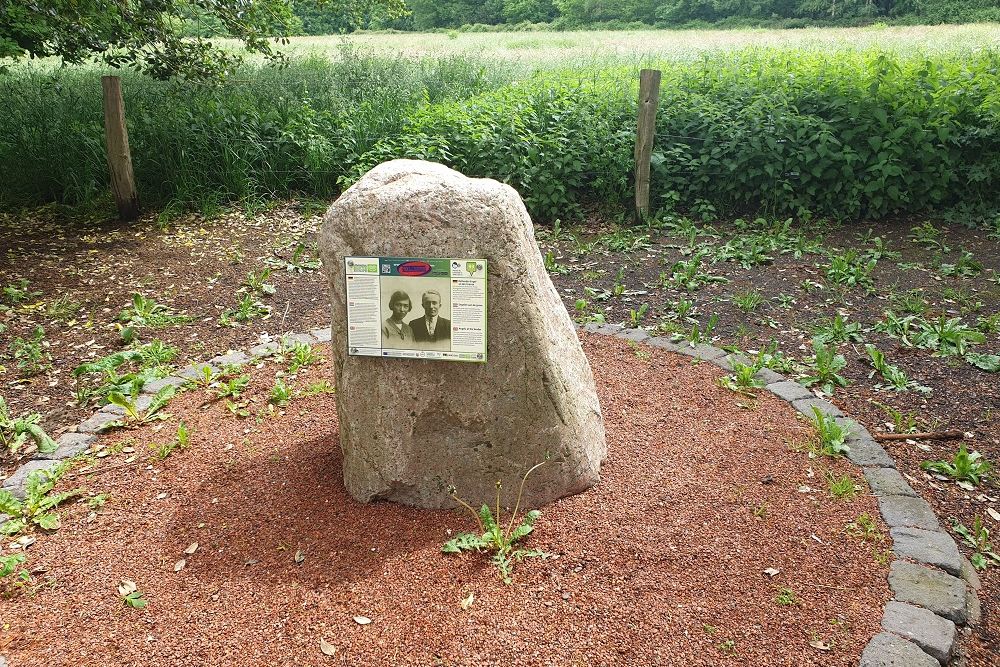Liberation Route Marker 093: Scene of a failed escape attempt
Scene of a failed escape attempt
Until 1972, this—one of the most western points of Germany—was the site of the forester's house of Nergena-Süd in Grafwegen, right along the border. The Rausch forester family lived here from 1925. It is located along the "green" border, which is hard to patrol; there is an abundance of paths and shortcuts with which to cross the border secretly. Of course, you had to know the way. The forester's wife, Luise Rausch, and her daughter Else had helped Jews cross the border from the ranger's house before. In late January 1939, the border at Wyler/Beek became the scene of a failed escape attempt.
The first flood of refugees from Germany arrived immediately after the boycott measures against Jewish shops in April 1933. Visa-free travel initially made it easy for Germans to cross the border. However, the violent Kristallnacht in November 1938 put the situation on edge. It became clear to everyone that there was no future for Jews in Germany, and a massive stream of refugees began.
Around 10,000 refugees attempted to cross the border into the Netherlands, including the border at Kranenburg.
The over 500-km-long "green" border, which was hard to patrol, offered an abundance of paths and shortcuts to cross the border secretly.
Because "illegal Jewish emigration" attempts continued to increase, the Gestapo in Düsseldorf took further measures on 31 March 1939 to "accelerate the definitive prevention" of attempted escapes. From that moment on, not only Jews were "detained for the protection of state security", but also those who "helped Jews gain a personal advantage".
A spectacular escape attempt took place at the Wyler/Beek border in late January 1939, involving Luise Rausch, the wife of the forester of Nergena-Süd in Grafwegen. Luise walked into a trap and was arrested for assisting with illegal border crossing. She was imprisoned for nearly seven months.
Audiospot - Scene of a failed escape attempt
Liberation Route Europe is a certified Cultural Route of the Council of Europe. With hundreds of sites and stories in nine European countries, the route links the main regions along the advance of the Allied Forces in 1943-1945.
The entire route consists of themed routes that can be travelled by by hiking, walking, cycling and car. These routes pass numerous historical and interesting sites and tell stories from a multitude of perspectives that were important in the final phase of World War II.
Many routes feature listening spots, offering the opportunity to listen to a historical story at a location. In addition, many ‘Vectors of Memory’ have been placed, indicating that the passer-by is on one of the Liberation Routes.
The routes can be found on the Liberation Route Europe website or in the app through which many stories can also be listened to.
Do you have more information about this location? Inform us!
Source
- Text: TracesOfWar & Liberation Route Europe
- Photos: Arjan Vrieze (1, 2, 3), Peter Schipper (4)
Nearby
Museum
Point of interest
- Evacuation of Breedeweg Groesbeek - Groesbeek
- Border Marker Milsbeek - Milsbeek
- Prisoner of war Camp Milsbeek - Milsbeek
Monument
- Memorial Sergeant Prager - Groesbeek
- Glider Memorial - Groesbeek
- Memorial Captain Anthony Stefanich Breedeweg - Breedeweg (Groesbeek)
Cemetery
- Dutch War Grave Roman Catholic Cemetery Breedeweg - Breedeweg (Groesbeek)
- Commonwealth War Cemetery Milsbeek - Milsbeek
- Dutch War Graves Roman Catholic Cemetery Milsbeek - Milsbeek
Remembrance Stone
- Stumbling Stone Rijksweg 128 - Mook
- Stumbling Stone Rijksweg 173 - Mook
- Stumbling Stone Nijmeegseweg 34 - Gennep
Fortification
- Trenches on Pyramid Hill - Milsbeek
- River Bunker South Maas-line Oeffelt - Oeffelt
- Maas-line - Casemate 105B - Cuijk








